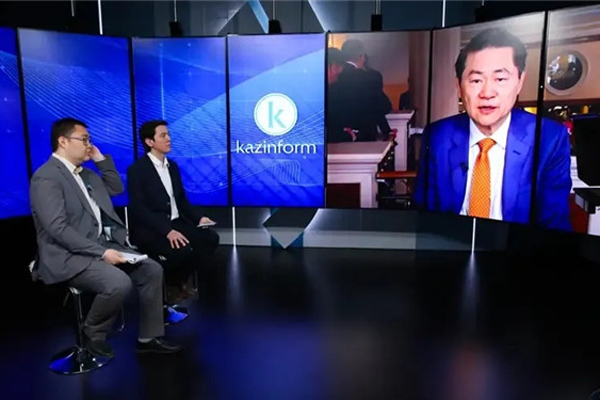China’s immigration and aid agencies a sign of global aspirations
| March 28 , 2018Author:
Wang Huiyao, Founder and President of the Center for China and Globalization(CCG), a think-tank based in Beijing.
Two new government agencies were created at the meeting of China’s National People’s Congress earlier this month. The State Immigration Administration and the International Development and Cooperation Agency each in its own way signifies Beijing’s endeavour to provide institutional support for China’s expanding global role.
Inbound immigration is a relatively new phenomenon in China. Monitoring and regulating cross-border flows of people traditionally fell within the purview of the public security authorities. The concept of immigration, on the other hand, is associated with the positive connotation of greater border openness. The difference is not merely semantic but suggests a shift in the government’s approach to transnational migration.
The driving force behind such a shift can be traced to China’s changing economic and demographic realities. As the nation confronts an ageing workforce and a shortage of brainpower critical to China’s economic ambitions, attracting and managing foreign talent is increasingly being incorporated into Beijing’s grand strategy for the “new era.” Setting up the State Immigration Administration is intended to help China win the battle for global talent.
In the context of more restrictive immigration policies under the US administration of President Donald Trump, it also sends a signal to the world that China is embracing inbound immigration as part of its commitment to a more human-centred version of globalisation.
As China transforms itself from an aid recipient to an aid giver, the International Development and Cooperation Agency is set to streamline the institutional responsibilities for foreign aid that are currently Balkanised among different bureaucratic agencies and entities across the state and the civil society.
As a rising power, China is increasingly called to take on a more prominent role on the world stage. The Belt and Road Initiative, a strategy to build infrastructure and foster development among more than 80 countries, has increased the importance of China’s foreign aid programme. A centralised administrative body, it is hoped, will boost efficiency in mobilising and allocating resources.
Together, these two proposed agencies herald the era of China’s global aspirations. Migration and development aid are two aspects of globalisation that require institutional support at national, transnational and supranational levels.
The ideas to set up agencies overseeing immigration and foreign aid have been floating around in Beijing circles for years. As a new member of the International Organisation for Migration, China now has the State Immigration Administration as a primary vehicle of representation. Agencies such as the United States Agency for International Development and the European Civil Protection and Humanitarian Aid Operations now have a clear Chinese counterpart with which to interact.
The two newcomers to the central bureaucracy have attracted much public attention. However, their future is not without challenge. Newly set up, the immigration agency needs to add a team of professionals that is different to those working in public security fields. As the need for co-operation with foreign counterparts and international organisations, the agency is likely to confront a sharp demand for domestic talent who are experienced in managing cross-national inter-agency affairs.
For the development aid agency, the challenge will come from the task of easing the west’s anxiety about a perceived hidden strategic agenda. It remains to be seen how these agencies’ interactions with the outside world, in the context of growing geopolitical competition and a renewed “China threat” sentiment, would be perceived and interpreted both at home and abroad. The burden of proof falls on to China.
Recommended Articles
-

KNA | Global trade, U.S.-China tensions, AI regulation
-
[Research Features] China’s role in a sustainable post-pandemic globalization
-
Wang Huiyao: China is not a threat to the international community - the world can benefit through China’s development
-
Wang Huiyao in dialogue with Lawrence H. Summers
-
Straits Times Interviews Wang Huiyao on China-India Relations